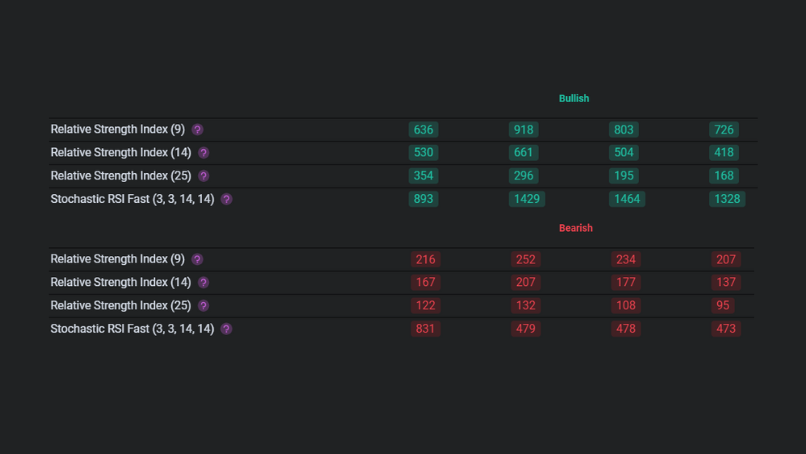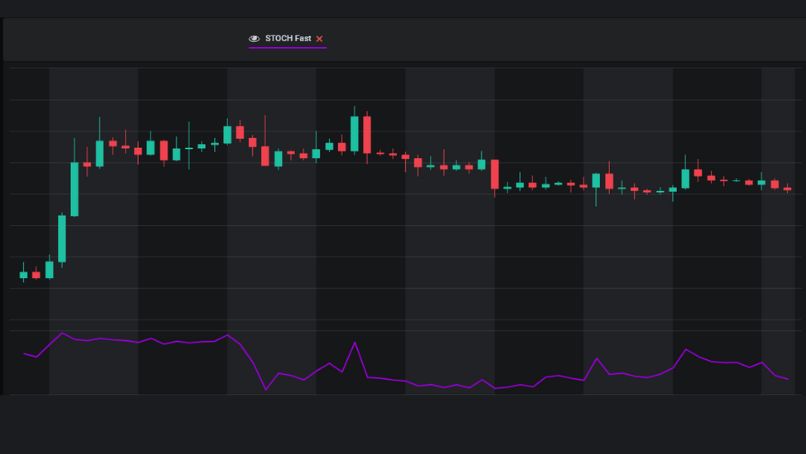Search Knowledge Base by Keyword
Stochastic RSI Fast (3, 3, 14, 14)
What does Stochastic RSI Fast mean?
The stochastic RSI is an oscillator of an oscillator. It measures where the current RSI reading is (on a % basis) relative to the range of the RSI over the past 14 days. It is more sensitive than the original RSI and provides great signals in a sideways market. Readings are in the 0-100 range with <20 indicating oversold and >80 overbought conditions. Stochastic RSI can be used to identify short-term trends by looking at centerline (0.50) crossovers. When the Stochastic RSI is above 0.50, the coin(pair) may be seen as trending higher and vice versa when it’s below 0.50.
What is difference between Stochastic RSI Fast (3, 3, 14, 14) and Stochastic (14, 3, 3)?
Stochastic RSI (Relative Strength Index) and Stochastic Oscillator are both technical indicators used in technical analysis to assess the momentum and potential reversal points in cryptocurrency’s price movement. They both involve the concepts of overbought and oversold levels, but they use slightly different calculations and parameters.
Stochastic Oscillator (14, 3, 3):
- The Stochastic Oscillator is calculated based on the relationship between a coin’s closing price and its price range over a specified period of time.
- The most common parameters for the Stochastic Oscillator are (14, 3, 3), which means:
- 14-period %K: The current closing price minus the lowest price over the last 14 periods, divided by the highest price minus the lowest price over the last 14 periods. This gives the current percentage of the range within the last 14 periods.
- 3-period %D: A 3-period moving average of the %K value, which smooths out the %K value and makes it more responsive to recent price changes.
- 3-period slowing: A smoothing parameter applied to the %D value to further smooth out the indicator.
Stochastic RSI Fast (3, 3, 14, 14):
- Stochastic RSI is a variation of the traditional Stochastic Oscillator applied to the RSI, which is another popular momentum indicator.
- The parameters (3, 3, 14, 14) imply the following calculations:
- 3-period RSI: This is calculated using the standard RSI formula over the last 3 periods.
- 3-period RSI %K: Similar to the %K in the Stochastic Oscillator, this calculates the current RSI value minus the lowest RSI value over the last 3 periods, divided by the highest RSI value minus the lowest RSI value over the last 3 periods.
- 14-period %K of RSI: This is a 14-period moving average of the 3-period RSI %K value, which helps smooth out the fluctuations.
- 14-period %D of %K of RSI: This is a 14-period moving average of the 14-period %K of RSI value.
In summary, while both the Stochastic Oscillator and Stochastic RSI Fast are momentum indicators, the key difference lies in the underlying values they operate on. The Stochastic Oscillator is based on the price range of cryptocurrency, while the Stochastic RSI Fast is based on the RSI values. The specific parameters used also influence the sensitivity and smoothing of these indicators, which can impact their responsiveness to recent price movements and potential crypto trading signals. Crypto traders often choose between these indicators based on their trading strategies and preferences.
altFINS Signals summary pre-defined Momentum Indicators


